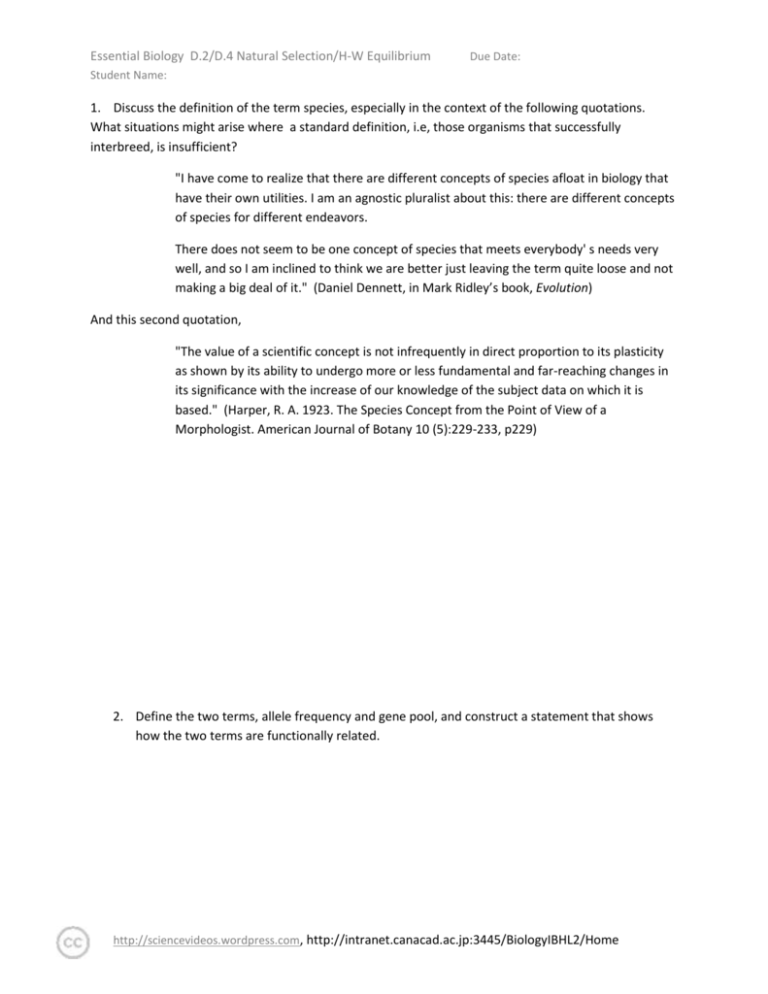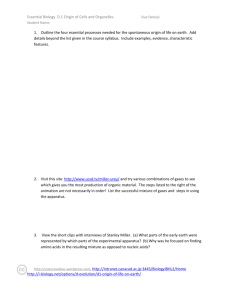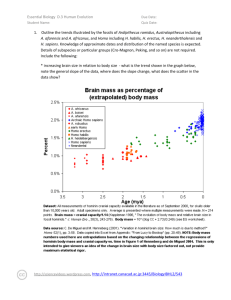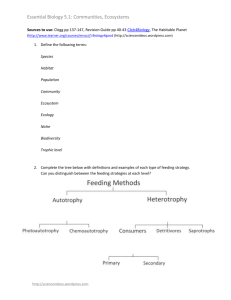Blog resource: http://tinyurl
advertisement

Essential Biology D.2/D.4 Natural Selection/H-W Equilibrium Due Date: Student Name: 1. Discuss the definition of the term species, especially in the context of the following quotations. What situations might arise where a standard definition, i.e, those organisms that successfully interbreed, is insufficient? "I have come to realize that there are different concepts of species afloat in biology that have their own utilities. I am an agnostic pluralist about this: there are different concepts of species for different endeavors. There does not seem to be one concept of species that meets everybody' s needs very well, and so I am inclined to think we are better just leaving the term quite loose and not making a big deal of it." (Daniel Dennett, in Mark Ridley’s book, Evolution) And this second quotation, "The value of a scientific concept is not infrequently in direct proportion to its plasticity as shown by its ability to undergo more or less fundamental and far-reaching changes in its significance with the increase of our knowledge of the subject data on which it is based." (Harper, R. A. 1923. The Species Concept from the Point of View of a Morphologist. American Journal of Botany 10 (5):229-233, p229) 2. Define the two terms, allele frequency and gene pool, and construct a statement that shows how the two terms are functionally related. http://sciencevideos.wordpress.com, http://intranet.canacad.ac.jp:3445/BiologyIBHL2/Home Essential Biology D.2/D.4 Natural Selection/H-W Equilibrium Due Date: Student Name: 3. State three examples of barriers to gene pools and describe the consequences to the evolution of the populations represented by the gene pools. Make sure your examples are of a varied nature – including, differences in time, space, molecular compatibility and behavior. 4. Explain why a polyploid organism with an odd number of sets of chromosomes is sterile. How does chromosome doubling help solve this problem? 5. How can speciation via polyploidy affect the rate of evolution? 6. Why might plants be more able to tolerate polyploidy than animals? What special features might be found in those animals that do tolerate polyploidy ? http://sciencevideos.wordpress.com, http://intranet.canacad.ac.jp:3445/BiologyIBHL2/Home Essential Biology D.2/D.4 Natural Selection/H-W Equilibrium Due Date: Student Name: 7. Investigate the etymology of the terms allopatric and sympatric. Connect this information to a practical example of each term in context. 8. How is adaptive radiation of the pentadactyl limb a type of divergent evolution? How can it be that the group identified with the evolution of the pentadactyl limb, the land vertebrates, can include the whale, a marine mammal? 9. Describe how mimicry can be thought of as a type of convergent evolution? http://sciencevideos.wordpress.com, http://intranet.canacad.ac.jp:3445/BiologyIBHL2/Home Essential Biology D.2/D.4 Natural Selection/H-W Equilibrium Due Date: Student Name: 10. Make two figures for each of the two terms, punctuated equilibrium and gradualism, one figure should representing the pace of evolution as a graph of number new species vs. time, and the other, as a evolutionary “tree.” 11. Compare transient and balanced polymorphisms. Give a brief example of each. http://sciencevideos.wordpress.com, http://intranet.canacad.ac.jp:3445/BiologyIBHL2/Home Essential Biology D.2/D.4 Natural Selection/H-W Equilibrium Due Date: Student Name: 12. Label each of the following graphs as representing transient or balanced polymorphism or both. http://sciencevideos.wordpress.com, http://intranet.canacad.ac.jp:3445/BiologyIBHL2/Home











